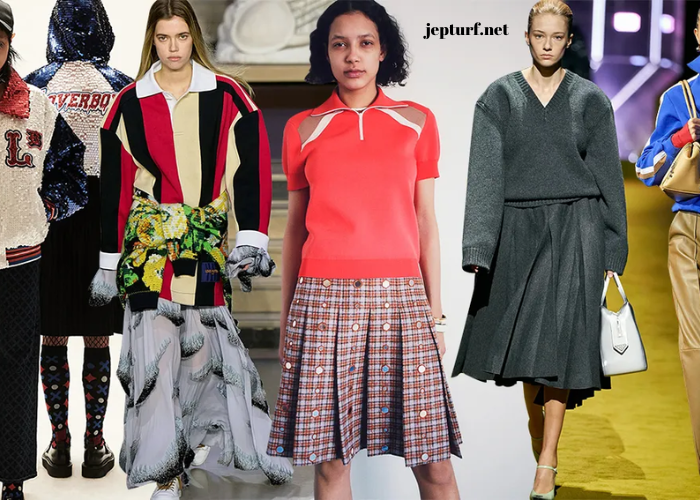In a world that is becoming increasingly interconnected, the blending of cultures and lifestyles has given rise to a fascinating phenomenon – Lifestyle Fusion. This captivating trend is where culture meets couture, resulting in a dynamic and innovative approach to fashion, design, and living. In this article, we will delve deep into the world of Lifestyle Fusion, exploring its origins, impact, and the individuals and brands that are pioneering this exciting movement.
The Genesis of Lifestyle Fusion
Lifestyle Fusion is not a mere product of the 21st century; its roots can be traced back through history. Cultures have been interacting, trading, and influencing one another for centuries. However, the digital age and globalization have accelerated this process, making cultural fusion more accessible and impactful than ever before.
One of the key driving forces behind Lifestyle Fusion is the ease of travel and communication. In today’s world, people can hop on a plane and find themselves on the other side of the globe within hours. This physical accessibility has opened up opportunities for individuals to immerse themselves in different cultures, and this cultural immersion often finds expression in their lifestyles and fashion choices.
The internet and social media also play a significant role in promoting Lifestyle Fusion. Instagram, Pinterest, and other visual platforms have become virtual melting pots of ideas and inspiration. Individuals from diverse backgrounds share their unique perspectives, creating a digital tapestry of cultural fusion. Hashtags like #BohoChic, #JapaneseStreetwear, and #AfricanPrints have become popular tags for those who wish to explore and express this fusion.
The Fashion Revolution
Fashion is perhaps the most visible and accessible aspect of Lifestyle Fusion. The blending of clothing, accessories, and aesthetics from different cultures has given birth to new and exciting styles. Let’s take a closer look at some of the influential facets of this fusion in the fashion world.
Traditional Meets Modern
One of the most striking elements of Lifestyle Fusion in fashion is the harmonious merging of traditional and modern elements. For example, you might see a traditional Indian sari paired with a contemporary leather jacket, or a classic Chinese qipao dress adapted with a modern twist. This juxtaposition creates a visually appealing and culturally rich ensemble.
Designers like Manish Arora and Guo Pei are renowned for their ability to seamlessly blend traditional and modern elements, pushing the boundaries of fashion and challenging conventional norms.
Global Inspiration
Fashion designers and enthusiasts draw inspiration from diverse sources around the world. This global infusion of ideas leads to collections that reflect a rich tapestry of cultures. For instance, the use of African prints in Western fashion, Japanese kimono-inspired robes, or Native American beadwork in accessories showcases the eclectic nature of Lifestyle Fusion.
Brands like Zara and H&M are known for their diverse and culturally inspired collections, making these trends accessible to a wider audience.
Sustainable Fusion
As Lifestyle Fusion continues to grow in popularity, a commitment to sustainability has also emerged. Many designers and brands are opting for eco-friendly materials and production processes, aligning with the values of many cultures that have long practiced sustainable living. This intersection of culture and sustainability has given rise to “slow fashion,” emphasizing quality, longevity, and ethical production.
Brands like Patagonia and Stella McCartney are at the forefront of this movement, demonstrating that fashion can be both culturally inspired and environmentally conscious.
Street Style Culture
Street fashion is a powerful driver of Lifestyle Fusion. In urban centers around the world, you can find individuals who effortlessly blend elements from various cultures into their daily attire. Street style photography, popularized by bloggers and influencers, has given these unique ensembles a global platform.
Cities like Tokyo, New York, and London are hubs for street style culture, where you can witness an eclectic mix of influences from around the world converging in a single neighborhood.
Lifestyle Beyond Fashion
While fashion is a prominent aspect of Lifestyle Fusion, it extends far beyond clothing. This fusion has permeated other aspects of daily life, including interior design, cuisine, and even wellness practices.
Interior Design
Interior designers have embraced the concept of Lifestyle Fusion, creating living spaces that blend elements from various cultures. Moroccan-inspired tiles, Indian tapestries, and Scandinavian minimalist furniture can coexist harmoniously in the same room. This approach to interior design not only creates visually stunning spaces but also reflects the multiculturalism of modern life.
Fusion Cuisine
Culinary arts are another domain where Lifestyle Fusion has made a significant impact. Fusion cuisine involves merging flavors, techniques, and ingredients from different culinary traditions. Sushi burritos, Korean tacos, and Thai pizza are just a few examples of how diverse culinary influences are coming together to create exciting and delicious dishes.
Chefs like Roy Choi and Yotam Ottolenghi have gained worldwide acclaim for their innovative fusion cuisine, bridging gaps between cultures through the universal language of food.
Mindfulness and Well-being
Even practices related to mindfulness and well-being have been touched by Lifestyle Fusion. Yoga, for instance, originally from India, has become a global phenomenon. It has been adapted and combined with elements of other practices, such as mindfulness meditation and Pilates, to create new and holistic approaches to well-being.
Wellness retreats and studios now offer a diverse range of practices, allowing individuals to customize their well-being routines to suit their preferences and cultural interests.
The Impact of Lifestyle Fusion
Lifestyle Fusion is more than just a fashion trend or a design aesthetic; it has profound cultural and societal implications. Here are some of the ways in which Lifestyle Fusion is influencing our world:
Cultural Exchange and Understanding
Lifestyle Fusion fosters cultural exchange and understanding on a global scale. As people adopt elements from different cultures into their lives, they gain a deeper appreciation for the traditions, values, and histories of those cultures. This can lead to greater empathy and cross-cultural connections.
Empowerment Through Identity
For individuals who belong to culturally diverse backgrounds, Lifestyle Fusion can be empowering. It allows them to express their unique identity by embracing and celebrating their cultural heritage while also integrating elements from other cultures. This blend of identities can foster a sense of belonging in a globalized world.
Innovation and Creativity
Lifestyle Fusion fuels innovation and creativity across various industries. Whether it’s in fashion, design, or cuisine, the fusion of ideas from different cultures often leads to groundbreaking developments. This cross-pollination of creativity drives progress and keeps industries dynamic and fresh.
Economic Opportunities
The global popularity of Lifestyle Fusion has created economic opportunities for businesses and entrepreneurs. Brands that embrace this trend can tap into a diverse and broad consumer base. Additionally, artisans and craftsmen from different cultures can find markets for their products on a global scale.
Pioneers of Lifestyle Fusion
Numerous individuals and brands have played pivotal roles in shaping and popularizing Lifestyle Fusion. Let’s take a closer look at a few of these trailblazers:
Alessandro Michele – Gucci
Alessandro Michele, the Creative Director of Gucci, has been a driving force behind the brand’s fusion of traditional luxury with eclectic and diverse elements. Under his leadership, Gucci has embraced gender fluidity, celebrated cultural diversity, and introduced unique, cross-cultural designs.
Rihanna – Fenty
Rihanna’s Fenty brand has been a trailblazer in promoting diversity and inclusivity in the beauty and fashion industry







